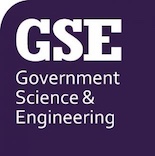Since it is British Science Week, here is a short blog about what I do at the Met Office. Most people know the Met Office for our weather forecasts and climate science, but less well-known is the increasing amount of work we do in ‘climate services’. This involves turning scientific research into usable and useful information, for people managing the risks and opportunities arising from a changing climate. This can range from senior government officials, to engineers building dams, or farmers dealing with flooding.
As a Climate Services Scientist, my role is to bridge the gap between climate research and using climate information to make decisions. My team, International Climate Services, is just one of a wider group in applied sciences at the Met Office. We work globally and cover a range of industries, such as urban development, water resources and the energy sector.
Currently, I am involved in the Climate Science for Services Partnership in China (CSSP China), a collaborative project supported by the Newton Fund. CSSP China is led by the Met Office in the UK and by the China Meteorological Administration and Institute of Atmospheric Physics in China. An important part of my role is building relationships between users and providers, which has led to me presenting to Chinese delegates (with a translator!), having Mandarin lessons and learning about Chinese culture.
One of the main climate services I am developing is for food security in China. Food security means ensuring everyone has access to sufficient safe and nutritious food. Using our computer models, climate scientists can predict how crop growth might be affected by global warming. Through workshops, interviews and surveys we can identify what farmers, policy makers and scientists in China would like to know. This may be which crops to grow or where to grow them. We can then provide the data in a way that is most beneficial to the user. For example, we have recently been using a novel methodology (‘UNSEEN’) to find the likelihood of coincident maize crop failures in China and the USA.
Soon, I will also be involved in the Asian Regional Resilience to a Changing Climate (ARRCC) project, which is in partnership with the World Bank and the Department for International Development (DFID). I will be looking at sea level climate information in Bangladesh and Pakistan, which could reveal the coastal risks from rising sea levels and help support adaptation measures.
Despite having only recently joined the Met Office, I am already amazed by the work that goes on to translate innovative climate research into something visible, physical and meaningful. I look forward to visiting China and seeing how our science is used to make important decisions in our changing climate.
Do you have an opportunity to share?
If you would like to publicise an opportunity in the next GSE Opportunities blog post, please send a summary of no more than 100 words with contact details or a link and a closing date to: gse@go-science.gov.uk







